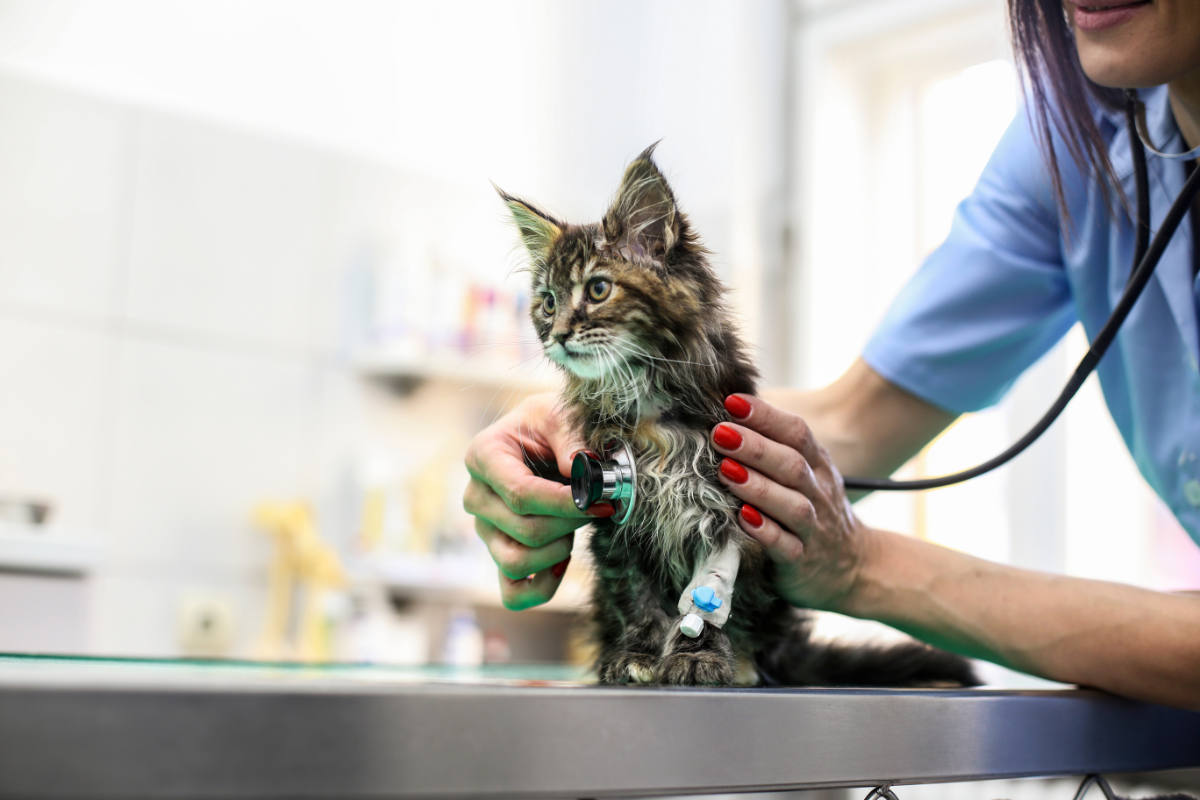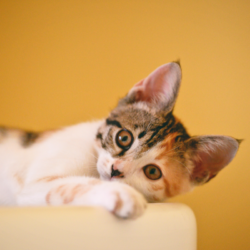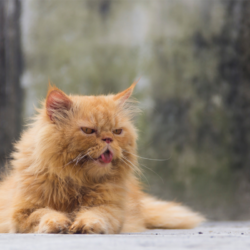Feline infectious peritonitis (FIP) is a serious viral disease caused by a mutation of the feline coronavirus (FCoV). Primarily affecting young cats and cats living in groups, the disease is almost always fatal if not treated promptly. FIP can progress rapidly, causing a range of serious symptoms.
What causes this disease?
Feline infectious peritonitis is caused by a mutation of the feline coronavirus (FCoV). This virus is common in cats, but generally only causes a mild intestinal infection known as FECV (Feline Enteric CoronaVirus). This is excreted in the faeces and is transmitted via the faecal route. However, in some cases, the virus mutates and becomes responsible for FIP.
This mutation transforms the virus into FIPV (Feline Infectious Peritonitis Virus), which attacks white blood cells called macrophages. Once the virus enters these cells, it replicates and provokes an aggressive immune response. This leads to severe inflammation in various tissues, particularly in the abdomen and internal organs.
The virus is transmitted via the faeco-oral route, mainly in households or communities where several cats live together. Contaminated surfaces, such as litter boxes and pet accessories, are common sources of infection. Although most cats infected with FCoV do not develop FIP, the risk increases if the cat is immunosuppressed or under stress.
What are the symptoms of feline infectious peritonitis?
Feline infectious peritonitis can manifest itself in two distinct forms: the wet form and the dry form. Each presents specific symptoms and potentially fatal consequences for the cat.
Wet form
Wet FIP accounts for around 60-70% of cases. It is characterised by an accumulation of fluid in the abdomen or thorax, causing symptoms such as ascites (abdominal effusion) or pleurisy (thoracic effusion). This accumulation of fluid can lead to breathing difficulties, and the cat may find it difficult to move, eat or play. Fever, loss of appetite and weight loss are classic signs of this form. The accumulated fluid is often viscous straw-yellow in colour, a key indicator of the disease.
Dry form
In dry FIP, the progression of the disease is slower but just as dangerous. Cats may show neurological symptoms, such as walking difficulties, paralysis or eye problems such as uveitis (inflammation of the iris). Other signs include a lack of appetite, fever and jaundice (yellowing of the skin and mucous membranes). Neurological symptoms often appear when the virus crosses the blood-brain barrier, making the situation considerably worse. The cat’s general condition gradually deteriorates, until paralysis sets in, affecting the digestive and urinary systems.
How is the disease diagnosed?
Diagnosing FIP is a real challenge because of the variety of symptoms, which can resemble those of other feline diseases. There is no single test that can confirm this disease with certainty, so vets have to use a combination of methods to make a diagnosis.
One of the first steps is to analyse the cat’s clinical symptoms. In the wet form, the presence of straw-yellow fluid in the abdomen or thorax is often a distinctive sign. This fluid is analysed to confirm the presence of an exudate with a high protein content and a density greater than 1.025.
Vets carry out blood tests to detect hyperglobinaemia (high levels of protein in the blood) associated with anaemia. However, these results are not specific to FIP. Furthermore, a positive serology for feline coronavirus is not sufficient to confirm the disease, as many cats carrying the virus will never develop FIP.
PCR (polymerase chain reaction) can detect the genetic material of the virus in tissues or body fluids, but only provides additional information. A biopsy of the affected tissues can also help to confirm the diagnosis by revealing lesions characteristic of the disease. Post-mortem diagnosis is often the most accurate option for confirming FIP by histological analysis.
What treatments are available?
Unfortunately, there is currently no official cure for feline infectious peritonitis. Treatment is mainly palliative, aimed at improving the animal’s quality of life. Treatment of the symptoms is essential to keep the cat comfortable, particularly by reducing fever and making breathing easier in cases of wet FIP.
The vet may prescribe immunosuppressants such as prednisolone to reduce inflammation. However, this treatment is not recommended if the cat is suffering from concomitant infections. Other options include the use of diuretics to eliminate excess fluid in the abdomen or thorax.
Experimental solutions, such as GS-441524, an antiviral patented by Gilead Sciences, are showing promising results in curing cats with FIP, although these treatments are not yet approved in France. In addition, vets sometimes use Virbagen Omega, a recombinant feline interferon, to stimulate the immune system.
Unfortunately, in the event of rapid progression or worsening of symptoms,euthanasia may be recommended to relieve the cat’s suffering.
What can be done to prevent the disease?
Prevention of FIP is essentially based on strict hygiene practices, particularly in households where several cats live together. Although there is currently no effective vaccine against feline coronavirus, it is possible to reduce the risks by maintaining a clean environment and minimising contact with potential sources of infection.
To prevent kittens from becoming infected, it is advisable to isolate them as soon as they are weaned, as maternal antibodies offer protection until they are 5 to 7 weeks old. Catteries and shelters must implement rigorous measures, including isolating all new arrivals for at least 30 days and carrying out screening tests before integrating them into a group.
It is also important to regularly disinfect surfaces, litter boxes and accessories shared by cats to limit the spread of the virus.





